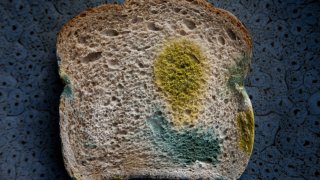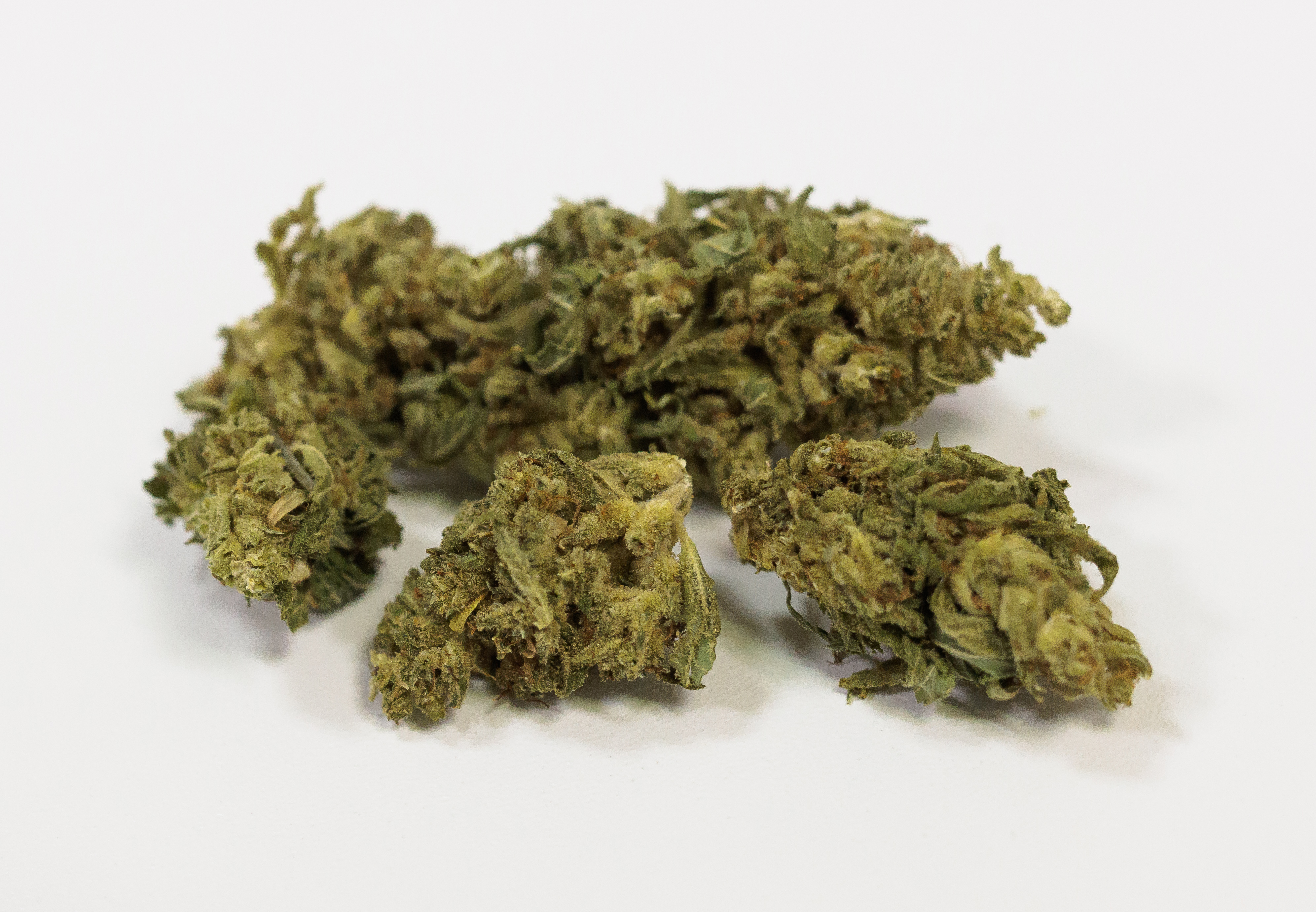
We've all encountered moldy food before, whether it's a rogue berry covered in gray fuzz or a green-speckled slice of bread. Maybe you didn't notice the mold growing until you plated your meal — or after you took a bite.
Aside from being grossed out, you may have concerns about the health effects: What happens if you eat mold? How much mold on food does it take to make you sick? And where do foods that are sold with mold, like blue cheese, stand in all of this?
Here's why mold grows on food, what happens when you eat it, and tips to keep food mold-free.
What is mold?
Get San Diego local news, weather forecasts, sports and lifestyle stories to your inbox. Sign up for NBC San Diego newsletters.
Molds are microscopic fungi, Josephine Wee, Ph.D., an assistant professor of food science at Penn State University, tells TODAY.com. Other examples of fungi include mushrooms and yeast, the kind used to make bread. In other words, all molds are fungi, but not all fungi are molds.
Molds are a natural part of the environment and found almost everywhere moisture and oxygen are present, per the U.S. Environmental Protection Agency.
There are tens of thousands of species of mold, which spread by producing tiny cells called spores. "The spores are everywhere; they are on our skin, in the air that we breathe, on our foods," says Wee.
Health
Outdoors, molds play an important role in breaking down organic matter like decaying leaves, but inside, mold can spoil foods or grow on damp surfaces and should be avoided, according to the EPA.
“Molds grow in the right conditions. ... They like higher humidity and warmer temperatures,” says Wee. This is why mold does not grow as quickly on food that's refrigerated.
Molds, like other living microorganisms, also require oxygen to grow, Randy Worobo, Ph.D., professor of food microbiology at Cornell University, tells TODAY.com. Cheese and other foods with a higher moisture content often come vacuum-packed as mold can grow soon after products are exposed to air, he explains.
“One of the unique characteristics of molds is that they’re really good at growing on just about anything. ... They’re scavengers,” says Worobo. Even at lower temperatures in the refrigerator, mold can eventually form on foods over time. If you've ever forgotten about leftovers, you've learned this the hard way.
Which types of mold are harmful?
When it comes to molds, some types are more harmful than others. "There's the good, the bad and the ugly," aka toxic, says Wee.
"Good" molds are used to produce certain cheeses, for example. A type called penicillium roqueforti is used to make blue cheeses like roquefort, gorgonzola and stilton, the experts note. Penicillium camemberti is used to make camembert and brie cheese, which have a white mold surface, Worobo explains.
The mold in and on these cheeses is safe to eat, according to the U.S. Department of Agriculture. "These are intentionally added to the milk cultures," says Wee. So blue cheese lovers can rejoice.
"Bad" mold grows on foods due to spoilage, says Wee. Food mold comes in many different colors and textures. On bread, it may look like green or black spots, says Wee, whereas berries often grow a white cotton-like fuzz, and mold on citrus fruits will look like green or gray dust.
Mold can also look red, pink or orange, and the color can change over time depending on the mold's life cycle, says Wee.
What happens if you eat mold?
In most cases, nothing happens if you accidentally eat food with mold on it, the experts note. “When you ingest the mold, the acids in your stomach, as well as the digestive enzymes, will break the cells down," says Worobo. Healthy individuals generally won’t get sick from eating a few bites of moldy food.
“For the general population, it’s not a big deal,” Worobo adds.
However, in immunocompromised people, the mold can potentially colonize and result in fungal infections, so these individuals should be extra careful and avoid any mold.
And certain types of mold — aka the "ugly" — can produce toxic substances called mycotoxins under the right conditions, says Wee. These can make anyone sick and pose serious health risks.
Exposure to toxic molds can cause adverse health effects in the short- and long-term, per the World Health Organization. The most dangerous type are aflatoxins, which can be carcinogenic to humans, per the USDA.
It's impossible to tell which type of mold is growing on food or whether it is toxic just by looking at it, which is why it's important to avoid eating moldy foods when possible.
How much mold can make you sick?
The amount of mold you consume matters, too. The average person likely won't get sick from ingesting small amounts of mold, the experts note. However, eating larger quantities of mold may result in some nausea or stomach upset.
Chances are you won't be able to eat very much because people naturally tend to avoid food that's spoiled, Wee explains.
"You're not going to eat a slice of moldy bread because it does not taste good and it's not appealing to the eye. It's a sensory issue," she says, adding that moldy food may smell bad or have an earthy flavor, like dirt.
You'll likely spit the food out or throw it away before you can finish the entire thing, Wee notes.
Any amount or type of mold can cause issues for people with mold allergies, the experts note. This often occurs through inhalation, but eating mold can also cause a reaction. "Even though there are no toxins that are present, there are people who cannot eat even small amounts (of moldy food) because of the spores," says Wee.
Symptoms of an allergic reaction to mold may include sneezing, a runny nose, or an itchy throat, according to Mayo Clinic.
Ingesting large doses of certain mycotoxins can cause acute poisoning or life-threatening liver damage, per the WHO. Fortunately, this is relatively rare.
Can you cut around moldy food?
The mold you can see growing on food may penetrate much deeper than surface-level, the experts note. Think of the roots of a tree growing underground, says Wee.
The body of mold consists of a thread-like root that invades the food, a stalk that rises above the food and may not be visible to the naked eye, and spores that form at the end of the stalks, according to the USDA. (The spores are what you see growing on the food.)
So cutting out or around mold on foods may not get rid of it, the experts warn. In fact, slicing a knife through a moldy spot can spread the spores to other parts of the food, says Worobo.
Moldy, spoiled foods may also contain bacteria that can make you sick — and are not visible. To be safe, toss any food that is growing mold or touching other moldy food, says Wee.
When to see a doctor if you’ve eaten mold
If you've eaten moldy food and it's too late to spit it out, don't panic. Unless you are immunocompromised or eat very large quantities of mold, you will probably be OK. But watch for any symptoms, the experts note. If you feel fine, you can proceed as normal.
If you develop severe gastrointestinal symptoms or signs of an allergic reaction, seek medical attention. These include but are not limited to: shortness of breath, an elevated temperature, vomiting or wheezing, per the Cleveland Clinic.
In any case, if you have concerns or questions about eating mold, always talk to your health care provider.
How to prevent mold on foods
There are steps you can take to reduce your risk of exposure to mold spores and prevent mold from growing on foods, according to the experts and the USDA:
- Discard all food growing mold
- Do not sniff moldy food (to avoid inhaling spores)
- Clean any surfaces and containers moldy food has touched
- Refrigerate all perishables at 40 degrees or lower
- Store and refrigerate cooked food within two hours of serving
- Cover foods while serving to prevent exposure to spores in the air
- Eat or discard leftovers after three to four days
- Examine all food for signs of mold before buying
This story first appeared on TODAY.com. More from TODAY:



